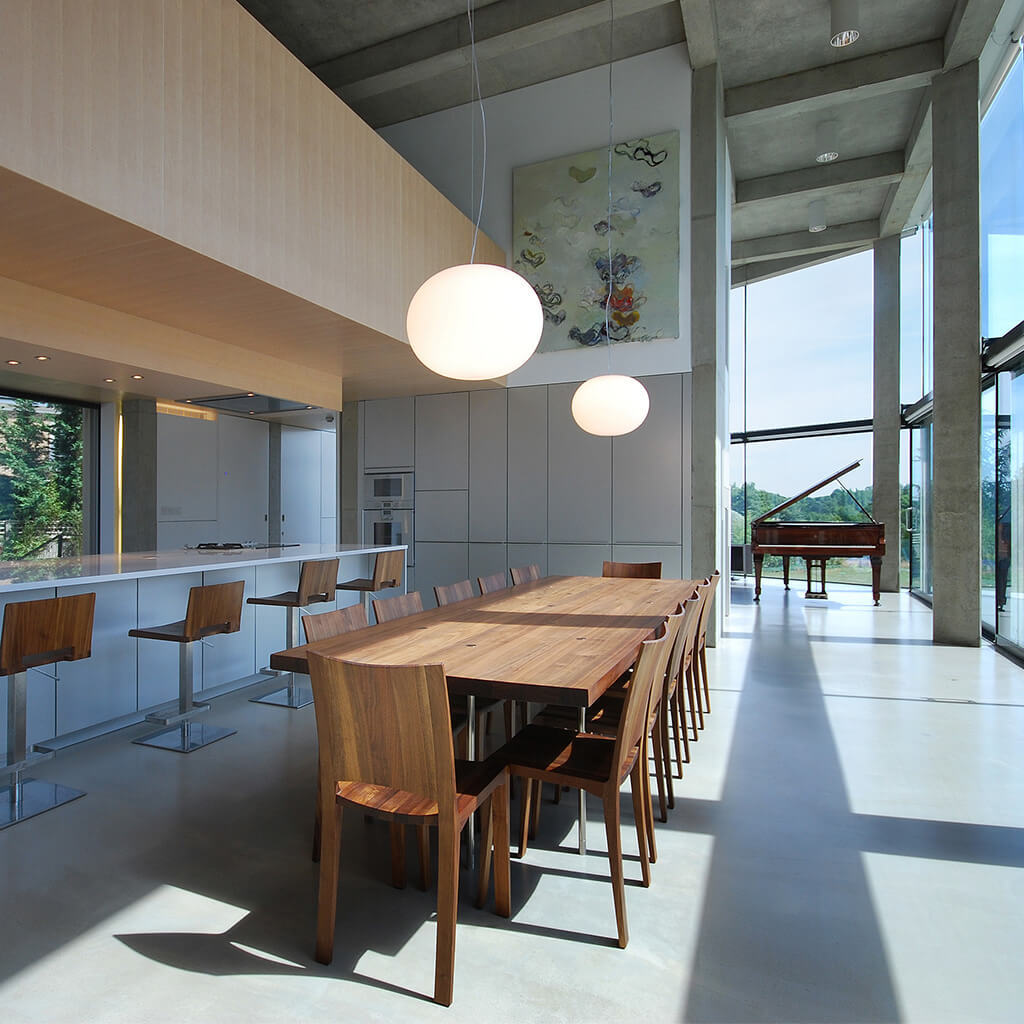Why Picking Builders Early is the Recipe for Success
The success of a building project depends more than anything else on close collaboration and communication between your builders and architect. And keeping to the budget, in turn, depends on the builder and architect starting to work together very early in the project.
Forging this early working relationship helps ensure that the builder will create working drawings and specifications that match the architect’s design and, at the same time, will provide the level of detail needed for a cost consultant (or ‘quantity surveyor’) to price your project accurately.
Unless the builders and architect collaborate like this, they can all too easily clash. For example, the builder ends up substituting materials that he thinks will fit the bill but aren’t what the architect wants at all, leading to friction and compromise, and ultimately project delay and avoidable cost.
But there is hope! One of the senior architects RedBook works with recently noted that ‘the pandemic forced both builders and architects to work in ways they hadn’t done before’. Remote working and greater use of communication technology led to a much better mutual understanding in the early stages of projects than the old way of working, dependent on formal face-to-face meetings.
In particular, the increased use of sophisticated digital tools such as Building Information Modelling (BIM), a powerful 3D-modelling program, has allowed contractors to manage buildability and cost more effectively—as well as liaise more efficiently with architects. This type of program allows builders and architects to share information and breakdown material costs for each aspect of the project with an ease and level of detail that is otherwise near impossible. It also allows the cost of material substitutions to be explored minutely.

So, with communication between builders and architects much improved, what about the perennial issue of cost versus quality? Typically, when a contractor tries to win the contract to build a house in a competitive tender by putting in a low bid, the builder will promise to deliver the finished house at a lower cost than his competitors. But the only way for the builder to do this is by reducing the quality of materials and workmanship they put into the finished product.
And this risk is again avoided when a contractor and architect collaborate early. Any compromises become a shared problem: the contractor is not in a race to offer the cheapest bid but to execute the design they have contributed to.

How then does a client appoint a contractor early, with all the benefits of collaboration, buildability and improved cost-certainty? Firstly, you may wish to consider what is called a Pre-Construction Services Agreement (PCSA).
This is a contract with the builder that appoints them as a consultant charged with ensuring the architect’s design is actually buildable (It may surprise you to know that architects may look at buildings in a very different way to builders, with the architects most concerned with pleasing the client with the design while the builder tries to find out purely practical answers to the design challenges. This can result in a potentially disastrous gulf between vision and reality).
Typically, early contractor input might be enabled by a two-stage tender, used in the first stage to procure a contractor’s involvement in the delivery process and the second stage to obtain the forming of the project. Other procurement routes, such as design and build, construction management, or management contracting, might also allow a contractor to become involved in the design stage.
To ensure buildability and increase the cost-certainty of the design as well as forging a better-integrated project team which reduces the likelihood of disputes, you may wish to consider a Pre-Construction Services Agreement (PCSA). Using a PCSA can enable the client to employ a contractor before the main construction contract has commenced. Allowing a more extended period of familiarity with the project team helps to create better relationships as well as reduce sharp learning curves impacting programme performance. Whilst tender prices for two-stage contracts may initially be higher than a single-stage tender, which are subject to full competition throughout, the final account tends to include fewer variations and fewer claims. Competition can be introduced into the second stage by an open-book approach to the tendering of sub-contracts.
Once the builder has completed this ‘buildability-assessment’, you are then in the happy position of knowing whether this is a builder you want to continue working with. You also know that from here on, the builder is responsible for the design development, alongside the architect.
And if you are not happy with the builder, you can simply find another one. This two-step process is known in the trade as a ‘two-stage tender’.
Another way of appointing builders early is to identify a single contractor, chosen very carefully on the basis of their reputation and agree with the builder on a fixed percentage that they will add for the cost of the work. And this cost is agreed upon at the outset with the builder. This process is known as a ‘negotiated tender’. Builders themselves much prefer this way of winning work for two reasons. First, they are not in competition with rivals, and secondly, it saves them the cost of preparing a competitive bid (often running into tens of thousands of pounds.) What is more, a negotiated tender gives you – the client, a degree of transparency when it comes to what the builder really believes the cost of the project will be.

Philip Wright, Head of Projects, RedBook Agency
At RedBook, we have years of knowledge and understanding of tricky projects, and we help clients—as well as builders and architects—by creating a cohesive, structured brief that details all the client’s requirements at the very start. We then ensure each project-team member is brought into the project at the right time and with a full appreciation of the client’s aspiration. With our in-house experts on hand to assess the project needs and our deep understanding of each client’s unique desires and vision, RedBook is well-placed to assist in helping clients achieve the ideal early collaboration builders and architects. We are the experts in launching projects.

